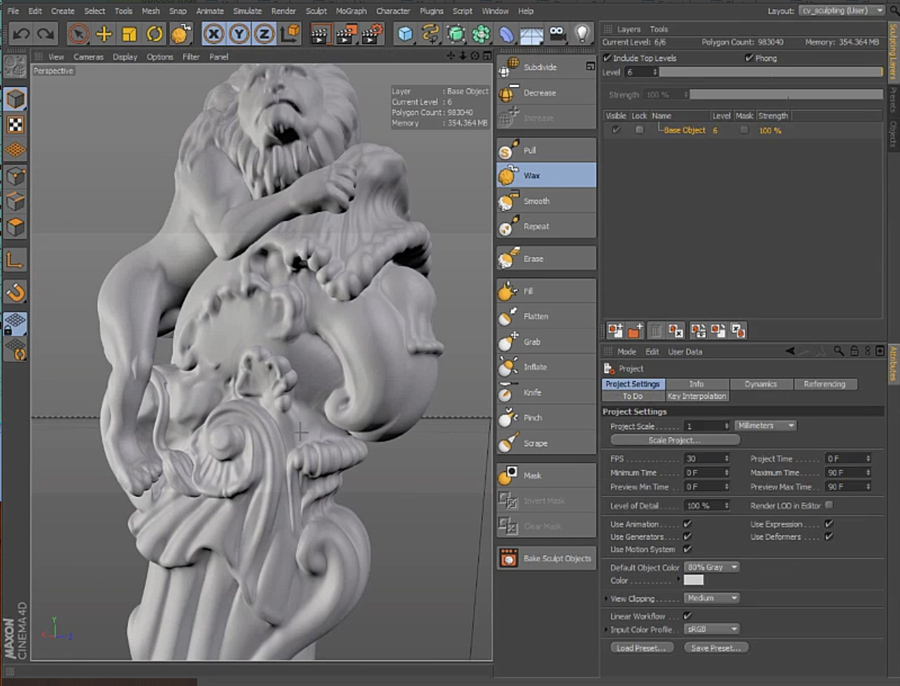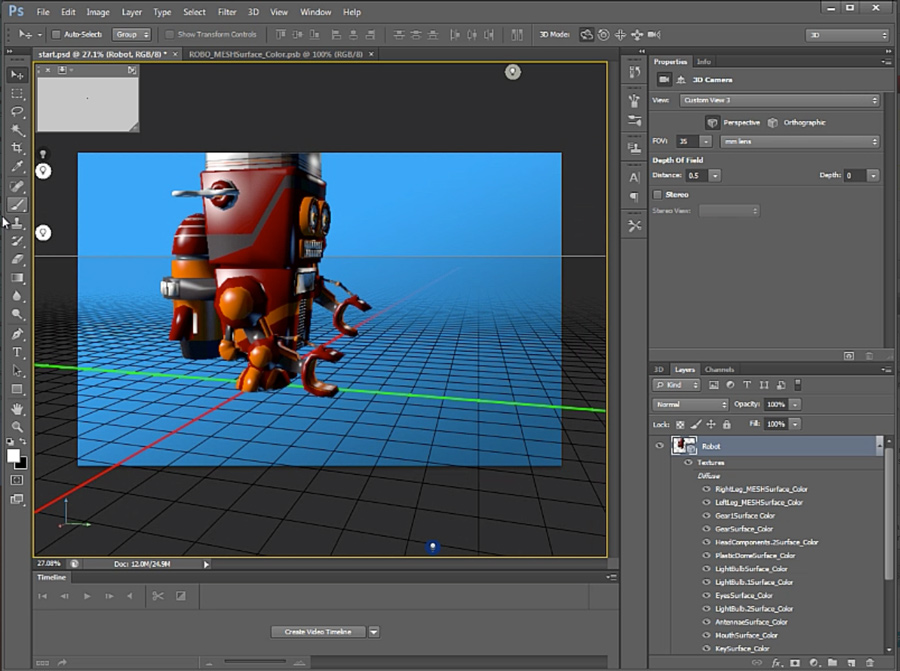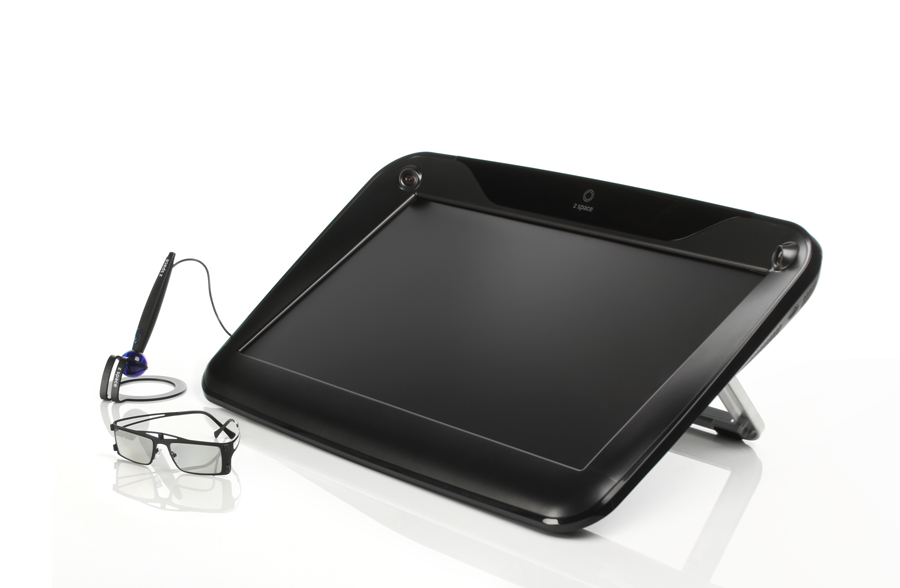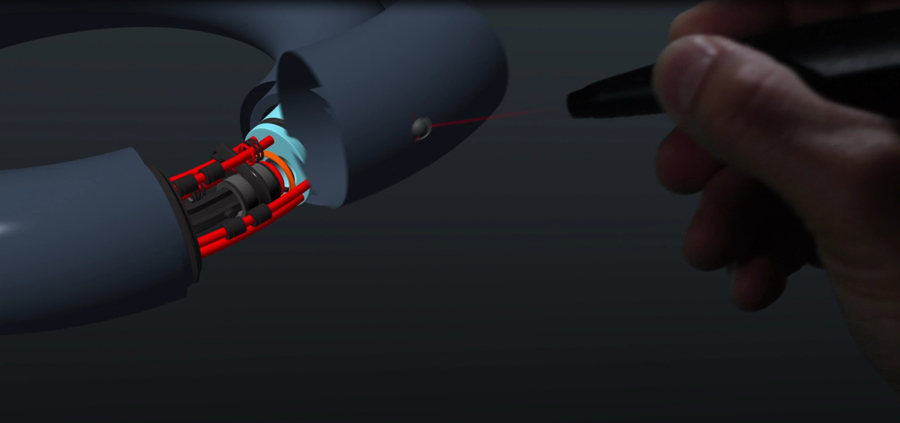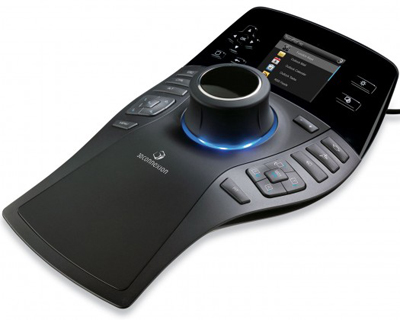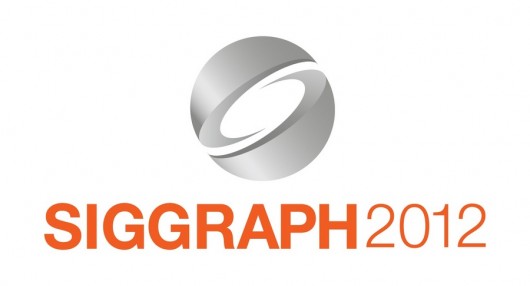 SIGGRAPH 2012 – Tuesday Aug. 7
SIGGRAPH 2012 – Tuesday Aug. 7
It was exciting to get back on the showfloor for SIGGRAPH and get to see the latest in software innovation as well as burgeoning technologies. I was able to catch up with a few developers that we’ve showcased on our site before as well as check out a few new products that you will hopefully be able to take advantage of in the future.
Cinema 4D R14
Some of you may know that Maxon Cinema 4D has announced version R14 which is slated for full release this September. The big news that came up first is the ability to sculpt meshes much like Zbrush and Mudbox. Keeping the toolset lean and focused, users have the standard Pull, Smooth, Flatten, Grab, Inflate, Pinch brushes that you find in most sculpting packages with a few extra to round it off. Up to 12 levels of subdivision with a limit of around 4 to 6 million polygons per object, depending on the power of your rig. Layers are supported to try techniques out or control the intensity of the marks. Alphas can be created to make stencils or repeating objects which can later be saved as a brush for later use. Considering that Cinema 4D has BodyPaint included, having the ability to sculpt in the same package makes a lot of sense and lowers the complexity of your pipeline.
Camera’s within Cinema 4D R14 have been updated as well. I really cool innovation that I think filmmakers will utilize is the ability to calibrate the camera to reposition your 3D scenes. Camera calibration is a function that lets artists plot a combination of a grid and or perspective lines in order to calculate the proper positioning of 3D elements. As you position your perspective lines over your photo plate, Cinema 4D is continually calculating to see if it has all the information it needs to place your objects. Colored indicators let you know how close you are and give you the leeway to stop when you feel it is close enough. Once everything is set, it drops the scene precisely on the plate in a believable manner. This also works great for matte painters when trying to build their scenes.
Two more camera tools that I think will be useful are morph and motion camera. With morph camera, you can blend several camera movements into one continuous take. Any selected cameras in the morph operation can be altered by controlling the intensity and speed of the blend, blend curve, or its interpolation. And it doesn’t stop at just jumping from one tracking view to another, aspects of each particular camera such as focal length, depth of field, and focus distance ( to name a few) can all be blended between cameras to make interesting effects.
Now the motion camera is a tool to simulate man-made camera movements. The effect blends between the look of a hand-held to something like a steady-cam. Tweaking parameters for footsteps, head rotation, camera rotation and position all help to control the aggressiveness of the random movement. The camera can also be constrained to a path or a target as it moves through the scene, and both of these attributes can be blended between. These tools offer a lot of control to produce almost any type of camera movements you can conceive.
One last thing I want to toss in is about the Photoshop integration for 3D objects for Cinema 4D R14. The new import C4D plugin for Photoshop will allow artists to bring in geometry, textures, lights and cameras on to a Photoshop 3D layer. From there, users can adjust all of these elements and continue working on painting textures and manipulating the materials to get the look that they want before going back to Cinema 4D. Cinema 4D and Photoshop have had a great relationship and this just seems to pull them even closer in tandem.
There’s even more features than that, so if that piqued your interest, head over to Maxon and download their demo. To get a full list of what’s in Cinema 4D R14 jump to their feature set on their site.
iPi Soft
Earlier this year I was able to review iPi Soft’s Desktop Motion Capture and take my first step into motion capture. It was a really cool experience being able to set up a small capture studio right in my living room and move around and see how well the software and Kinect cameras captured my movement. If finding an affordable way to do mocap is something you’re interested in and haven’t had a chance to read about iPi Soft’s software, check out the review here.
One interesting tidbit that I want to make you all aware of is a monthly contest that they have just recently started up but haven’t fully announced yet. They are accepting submissions of any small movie showcasing the use of mocap animation using their software. The rules, as of yet, are not concrete, but they are judging the entrees based on interesting and challenging motion as well as it being a polished production. The winner receives the most expensive version of their motion capture software!
But they will be announcing the contest officially soon with a better description of the rules. Check out their site and hold off on activating that demo until you have a plan of action.
Infinite Z
When I was invited to this booth to check out zSpace, I had absolutely no idea what they had for me. When I walked up to the podium, they had a large screen and what looked like a weird multi-buttoned digital pen with 3D glasses. I am not a huge fan of 3D. Most of the time I see it at the movies, it’s just not done well. So I was apprehensive about the product.
But after putting on the glasses and being to instructed to pick up piece of geometric piping, I was amazed at the intuitiveness and fidelity of movement as I turned the pipe around in space to peer through it to the other side. After placing it back on the virtual desk, I tested the boundaries of the laser indicator for the pen. The length of the marker seemed constant and you can move further into the space or pull out until it no longer registered the pointer. This gave a real sense of depth, as if you can touch something that lay further down.
I was able to move through and take apart a simplified replica of the human lungs and move a virtual camera down the air passageway that connected it to the throat. I could peel back the layers of every floor of a house or place a digital curve pathway for a camera fly through of the interior. I scaled a 3D human skeleton for closer observation and pulled apart a robot arm piece by piece revealing an intricate design underneath. I even played a game made in Unity that was a third person, isometric view shooter that handled really well. I was completely blown away.
When I asked about working in any of the current OS on the market, my guide showed me that this demo was running on Windows 7. He also showed me that they had started making it applicable for working in 3D software like Autodesk Maya. I had to try. After a few minutes of getting the feel for it, I was able to tumble around and pull at some verts and faces of some simple polygon shapes. It had a little ways to go before it felt perfect, but I could really see myself working in this environment to construct 3D assets.
I really hope this technology gains widescale appeal in the future. I can see it as a great educational tool for exploring anatomy or understanding mechanics in a fun environment. For the film maker, I can see it as an intuitive way to build previs and move through imagined scenes in a way that makes more sense than using a keyboard and a mouse. Hopefully, this will make you curious enough to check out their site and videos to get more information.
3D Connexion
This device is a lot more down to earth than working in zSpace, but I think will be a huge advantage in the here and now. I had a chance to see a demo of the 3D Connexion SpacePilot Pro in action and I was very impressed. Some of you may know about or have seen this device, but not many outside the professional community may have had a chance to try it out. The big selling point of this product is the ability to do a combination track, dolly, tumble, and rotate in a scene at the same time. Now I don’t mean all 4 at the same time, but much more realistically 2 at a time. This makes for much faster movement as you assess your objects and manipulate them in space. Also, having programmable buttons is great way to spend less time on the keyboard hunting for shortcuts. A nice side bonus is the way that it is held naturally is much more protective of your hand; preventing the inevitable claw shape that most artist’s get after using a mouse for too long. I’d really like to invest in something like this in the foreseeable future. Please head over to their site and look at what it can do.
Til Tomorrow…
I’ll be heading back in tomorrow to see what I may have missed and report back on what really stood out to me. Check back soon.

